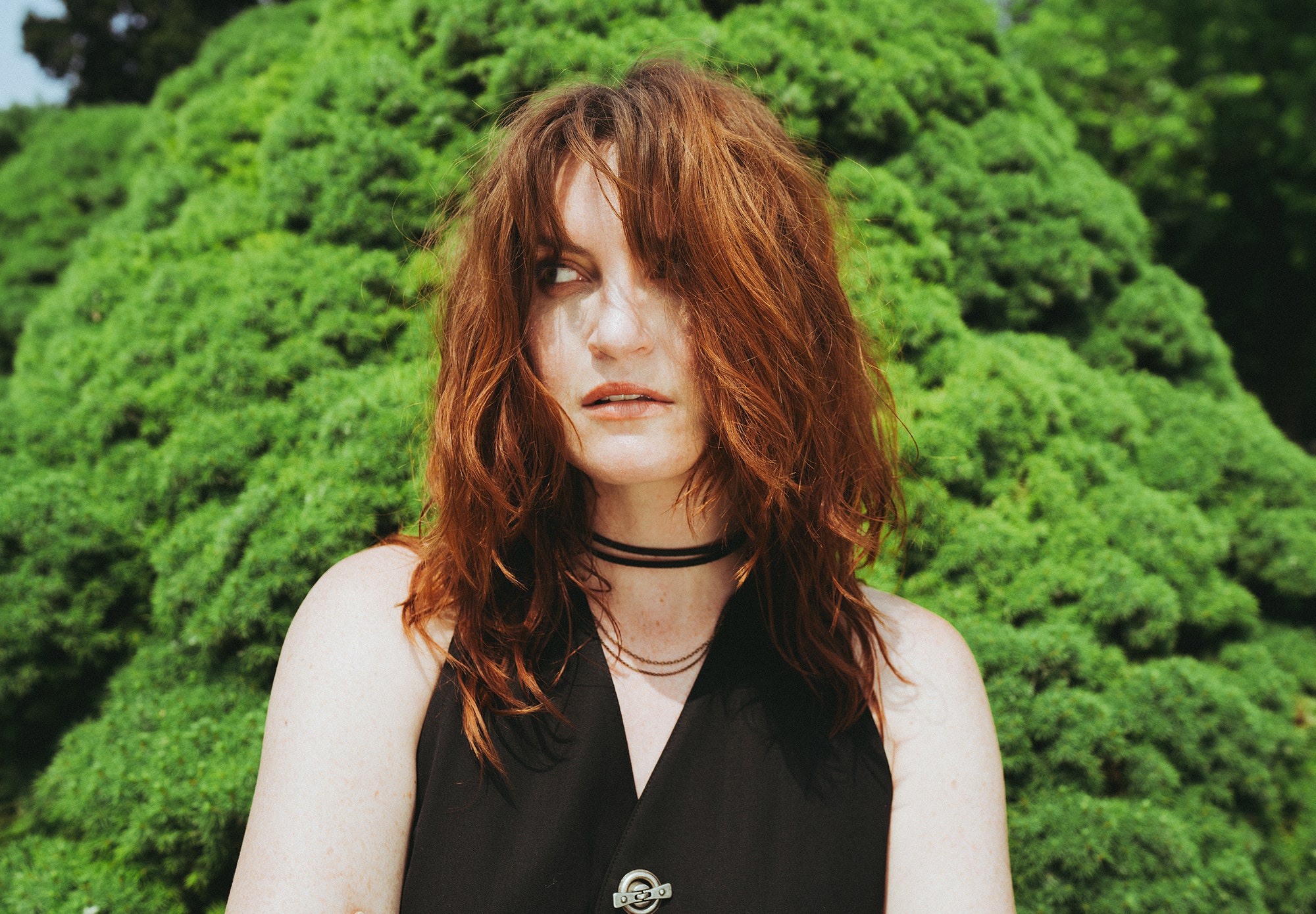Muna’s Katie Gavin su come trasformare "un sacco di emozioni" nel suo primo album da solista - e sostituire Chappell Roan | Vanity Fair

Katie Gavin, front woman of the queer indie band Muna, was 10 years old when she started writing songs. “I have a lot of feelings and I’ve always been very expressive,” Gavin, whose debut solo project, What a Relief, is out Friday, tells Vanity Fair over Zoom from her home in Los Angeles. So when she was tasked by her fourth-grade music teacher with writing a song about their school mascot, she came up with something unexpectedly profound though not particularly peppy: “Soaring through the air / so lightly and freely / I feel like a brush and the world is my painting.” “That was my vibe,” she says with a smile as her cats, Zip and Button, zigzag across her living room. “Just a little girl being like, ‘I’ve got lots going on in my heart.”
That same music teacher continued to follow Gavin’s rising career but passed away a couple years ago. “I went back to my hometown and did an acoustic version of that song at her funeral,” Gavin says. “It was really special.” Particularly because it was people like this teacher, and Gavin’s parents, who encouraged her musical abilities. “It just meant a lot,” she says. “Being that type of kid, it’s not always fostered, but for me it was.”
Gavin went on to study popular music at the University of Southern California in Los Angeles where she formed Muna with classmates Josette Maskin and Naomi McPherson. Together, the band has been at the forefront of indie pop for the last decade, carving out a prominent space in the industry for music about queer love and longing. With three critically acclaimed albums in their repertoire, they have headlined international tours, performed the festival circuit with stops at Coachella and Lollapalooza, and grown their audience by opening for Taylor Swift on the Eras Tour. They’ve even added a podcast, Gayotic, that showcases the band’s dysfunctional but charming dynamic alongside guests like Trixie Mattel, to their oeuvre.
Still, imposter syndrome manages to creep in for Gavin. “Something I want to work on is my relationship to how much success we actually have had and actually letting it in and processing it and feeling gratitude for it,” she says, reflecting on her career. “I think I have a disease of just feeling perpetually on the outside or perpetually up and coming.”
It’s a mindset that has fueled her work ethic, but Gavin has already cemented herself as a prolific songwriter. First with the 2021 career-defining hit “Silk Chiffon,” which has over 80 million plays on Spotify, and now on her first solo record, What a Relief, where she brazenly veers into a new lane, finding her voice in a collection of songs that lay a raw, folk-inspired drape over Gavin’s already polished pop sensibilities.
Written over the course of the last seven years, the album started as part of what Gavin calls a “Muna discard pile.” Occasionally, she would bring a song to the band that ultimately didn’t feel reflective of the group and would file it away. But eventually, she started sharing those songs with other trusted collaborators like her friend, the musician Eric Radloff, for feedback. “We would just be having conversations and I would send him [songs] that were related,” she says. “That kind of fostered the beginning of a sense that there could be a life for these other songs.”
Then, right before the pandemic, Radloff invited Gavin to open for him at an intimate show in LA. “I just showed up and played the songs and it felt really good,” she says. That sense of connection encouraged her to keep the flame alive. “Then when the pandemic happened, Eric and my friend Scott [Heiner] and I started working on arranging the songs.”
That year, Muna, while working on their third album, was dropped from RCA records. It gave Gavin time to explore and find her footing as a solo artist, even while still working on a Muna album. Soon after, Phoebe Bridgers signed Muna to her independent record label, Saddest Factory Records. When Bridgers heard Gavin’s own demos, she paired Gavin with her producer, Tony Berg, to refine the record. They emerged with 12 tracks that reintroduce Gavin to her fans intimately, revealing her innermost desires and inviting them on her journey of self-discovery.
Definito come "Lilith Fair-core" da Gavin, l'album riflette la musica con cui è cresciuta e gli artisti femminili, come Tracy Chapman e The Chicks, che l'hanno aiutata a navigare nell'adolescenza. "Ho avuto un vero ritorno a Tori [Amos] e Ani [DiFranco], Indigo Girls, e Melissa Etheridge e tutti quegli artisti incredibili nei miei 20 anni, che si sono fusi nel momento in cui ho iniziato a lavorare su questo album." Gavin canalizza abilmente queste influenze e quella espressiva bambina di 10 anni che era una volta, abbracciando i suoi grandi sentimenti sui brani romantici come "Aftertaste," "As Good as It Gets," (feat. Mitski), e una traccia straordinaria e ipnotizzante, "Sanitized." Tra l'esplorazione di sé di Gavin, esamina anche legami familiari e traumi generazionali su "The Baton," e "Inconsolable."
Anche se l'album è unito in modo fluido, Gavin ammette che il processo non è stato facile. "Tendo ad avere cali emotivi quando un progetto sta per uscire perché è così vulnerabile e può essere spaventoso," dice. "Sento davvero che questa sono solo io in un modo che non è mai stato prima." È stato anche un equilibrio mentre si dà da fare per un prossimo album dei Muna. "Non so se sto facendo un buon lavoro, e ho pianto con loro a riguardo, ma loro mi hanno detto di stare zitta," dice Gavin, che aggiunge che Maskin e McPherson non hanno fatto altro che supportarla. "Davvero, loro non hanno mai detto nulla. Non una sola cosa che mi ha fatto sentire strano facendo questo. L'unica cosa che dicono è che vogliono che mi prenda cura di me stessa. Sono solo davvero, davvero, davvero fortunata ad averli. Li amo."
Il mese scorso, quando Chappell Roan si è ritirata dal suo posto da headliner al festival musicale All Things Go a Forest Hills Stadium a Queens, New York, citando lotte legate alla salute mentale, i Muna sono subentrati per esibirsi. Gavin è grata che il loro amore e supporto per Roan si sia manifestato sotto forma di sostegno tangibile (e di una versione acustica del successo di Roan "Good Luck, Babe!") durante quel periodo. "Ero orgogliosa di come tutti si sono alzati all'occasione," dice. "È un'icona. È fatta per questo, non penso che nulla la fermerà, ma ha bisogno di tempo e grazia."
La situazione ha anche offerto un'opportunità per riflettere sul viaggio della band fino ad oggi. "Abbiamo avuto 10 anni di opportunità di crescere senza esplodere," dice umilmente. Paragona il rapido successo di Roan a un'esperienza traumatica, definendo lo status da celebrità innaturale, e è grata di aver potuto procedere al proprio ritmo. "Ho suonato solo un paio di concerti da solista, ma uno di loro è stato in questa vecchia chiesa e ho fatto sedere tutti per terra ed è stato davvero gentile e calmo," racconta. "È un'energia molto yin e yang." Fare connessioni intime con What a Relief è esattamente ciò che voleva fare. "Voglio condividere la comunione con la squadra. Sono entusiasta di questo," dice.
Monica Lewinsky su 25 Modi per Calmarti Prima delle Elezioni
Il Ritorno di Guru Jagat
Perché il Bestseller N. 1 di Melania non Sta Volando dagli Scaffali delle Librerie?
Kamala Harris non Stà Ripetendo gli Errori del 2016
Stanley Tucci: "Dopo Il Diavolo Veste Prada, non Riuscivo più a Trovare Lavoro"
Come l'Amico Migliore di Barron Trump sta Modellando l'Offensiva Podcast del 2024
I Giorni Oscuri di John Williams Prima di Squali e Guerre Stellari
Ecco Come è Fatta una Nota di Ringraziamento di Taylor Swift
Registrati per l'Ora del Cocktail, il Brevetto Giornaliero Essenziale di VF




